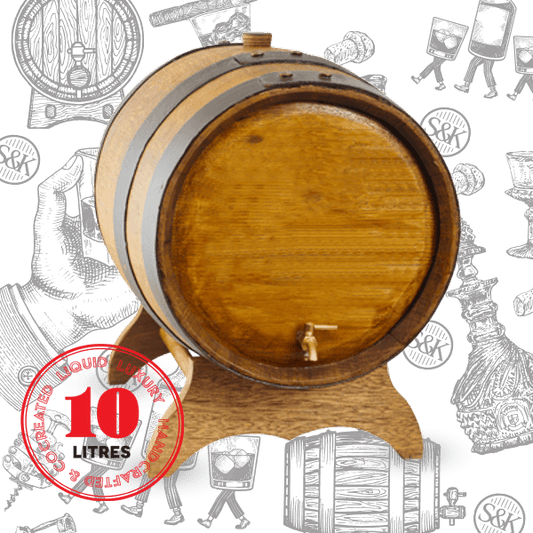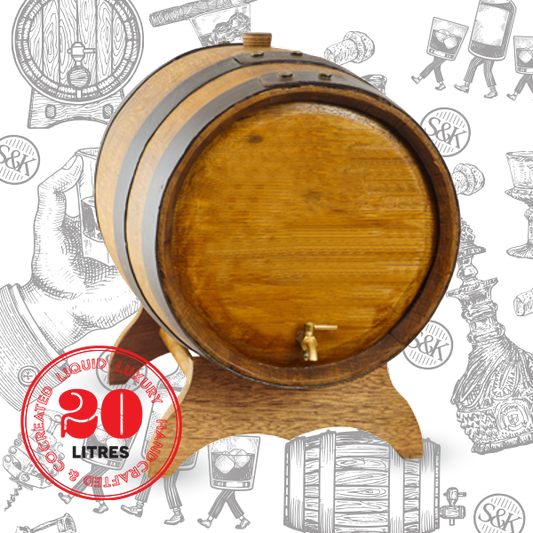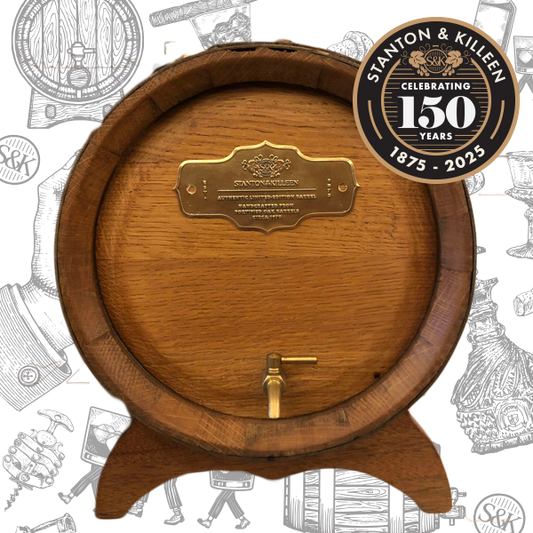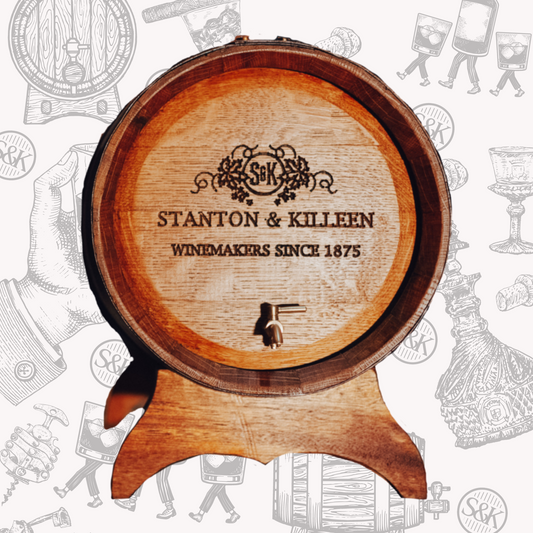When Good Barrels Go Bad (and How to Fix Them)
Troubleshooting tips from the fortified experts at Liquid Luxury.
Let’s face it, every barrel journey has its bumps. One day your blend smells heavenly, the next it’s got a whiff of something… less divine. Maybe there’s a bit of mould creeping across the top, or your beloved barrel has sprung a leak just when things were getting good.
But here’s the thing, every great winemaker (and home blender) has been there. A few spills, a few sighs, and a whole lot of learning later, they’ve emerged stronger, wiser, and probably a bit stickier.
So, here’s your go-to guide for when your fortified dreams take a slightly sour turn and how to set things right again.
1. Contamination — The Uninvited Guest
What’s happening:
Bacteria or fungi have found their way into your blend. It’s one of the most common challenges and, left unchecked, can turn your wine from brilliant to bleak in record time.
Our advice:
-
Start clean, stay clean. Every funnel, jug, dipstick, and glass should be spotless and sanitised before touching your wine. Residual sugar and wine films are prime real estate for bacteria.
-
Keep the environment healthy. A clean, well-ventilated storage area free from dust, mould, and pests is your first line of defence.
-
Use sulphur wisely. A regular treatment with sulphur dioxide helps protect against microbial spoilage and keeps your wine fresh and stable.
Expert tip: Check and balance sulphur every 12–18 months. A quick test now can save you from heartbreak later. We offer free laboratory services for our home barrel customers — you can submit a sample for analysis here.
2. Mould — The Silent Invader
What’s happening:
Mould thrives in damp, poorly ventilated conditions. It can appear on the barrel’s exterior or, in more serious cases, develop inside the wood where it’s harder to reach.
Our advice:
-
Balance humidity. Aim for around 70–80%. Too low, and your barrel dries out; too high, and mould takes over.
-
Clean the exterior regularly. A quick wipe with warm water and a soft cloth will do. Avoid harsh chemicals that can taint the wood.
-
Encourage airflow. Barrels need to breathe, space them out and avoid stacking too tightly.
Expert tip: Mould on the outside is cosmetic; mould inside is a deal-breaker. If it develops internally, clean thoroughly before refilling. We have a step-by-step guide to cleaning your home barrel here.
3. Evaporation — When the Angels Get Greedy
What’s happening:
Also known as the angel’s share, evaporation is a natural part of barrel ageing — but too much of it can leave your blend overly concentrated, unbalanced, or low in volume.
Our advice:
-
Mind the temperature. Keep your barrel in a cool, humid environment away from direct sunlight or heating sources.
-
Check seals and taps. Even a slow leak adds up over time — make sure fittings are tight and watertight.
-
Top up regularly. Keeping the barrel full reduces oxygen exposure and keeps the flavour profile stable.
Expert tip: A little concentration can add complexity, but too much can skew balance. Taste every few months, top up as needed, and don’t let your blend dry out.
4. Barrel Shrinkage — The Dreaded Drip
What’s happening:
Wood breathes — and when it gets too dry, it contracts. The result? Leaks, oxidation, and unnecessary stress.
Our advice:
-
Control your storage environment. Humidity is your friend, particularly in summer or when heaters are running.
-
Don’t let barrels sit empty. Even short-term storage can cause shrinkage. Keep them filled or treat them with a holding solution.
-
If all else fails, rehydrate. Empty your blend, fill the barrel with clean water for 24–48 hours, and let the staves swell back into place.
Expert tip: Always contact us before rehydrating a barrel — our winemaking team can guide you through the safest process for your specific barrel type.
📧 Email: sam@stantonandkilleen.com.au
A well-seasoned, regularly used barrel is more stable than one that sits idle — think of it as exercise: use it or lose it.
5. Flavour Imbalance — Too Sweet, Too Sharp, Too Much of a Good Thing
What’s happening:
Sometimes your blend just doesn’t taste quite right. Maybe the sweetness dominates, or the oak’s a little too pushy. That’s not failure — that’s blending in progress.
Our advice:
-
Blend thoughtfully. Try mixing younger and older components, or combining wines from different parcels to build depth and texture.
-
Taste often. Pull small samples every few months to monitor development. The best blenders are curious, observant, and responsive.
-
Have a clear goal. Know what you want your final style to be, whether it’s bright and floral or rich and decadent, and tailor your topping and ageing regime accordingly.
-
Fine-tune gradually. Small adjustments can make big improvements. Be patient; balance takes time.
Expert tip: Keep tasting notes after every session. You’ll build a reference library unique to your barrel, this is the secret to mastering consistency and improvement over time.
The Bottom Line
Every great fortified maker, whether in a home shed or a winery cellar, learns through trial, error, and the occasional sticky floor. These small challenges aren’t setbacks; they’re milestones on your journey to mastering the craft.
At Liquid Luxury by Stanton & Killeen, we’re here to help you get there. From understanding your barrel’s quirks to refining your blend, our fortified specialists are as passionate about your wine as you are.
Need a Hand (or a Second Opinion)?
Whether you’re troubleshooting a tricky barrel or chasing that perfect balance, our winemaking team can help.
👉 Explore our LiqLux Academy articles, book a Sample Analysis, or get in touch for expert blending advice — because great fortified wine deserves great guidance.





